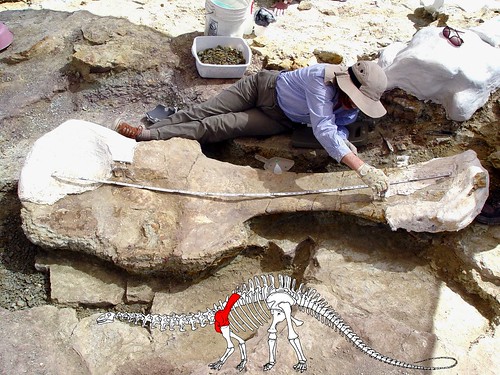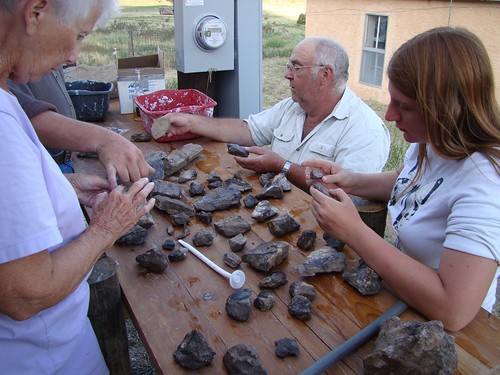
So many dinosaur fossils are being discovered in a quarry on the Comanche National Grassland in southeast Colorado that experts call the find a “tossed salad of dinosaur parts.”
Last fall, workers found the first Ceratosaurus tooth within the Picket Wire Canyonlands, which is best known for a huge dinosaur track site naturally exposed along the banks of the Purgatoire River.
The Ceratosaurus is distinctive for the horn-like accoutrement on its snout and compressed blade-like teeth. The river view quarry has so far produced remains of Apatosaurus, Camarasaurus, Allosaurus, Ceratosaurus, and a limb bone possibly from a Stegosaurus.
Bones found in the area were washed in and stacked up on a gravel bar in the river. Likely many of the dinosaurs, partial skeletons and carcasses were chewed up by carnivores while still fleshy, which further accounts for the strewn about fashion of the bones.
A task force of volunteers selected by the Denver Museum of Nature and Science, a Forest Service partner, is taking on the task of stabilizing and storing the fossils.
“Discoveries such as this allow scientists to better reconstruct ancient ecosystems of the past,” said Bruce Schumacher, a Forest Service paleontologist. “In learning about these past worlds, we are able to reflect better on our present world and understand what impact man is having on the present ecosystem.”

Humans have an innate curiosity about ancient remains of the past, such as fossils and other evidence of earlier human culture. America’s forests and grasslands play a fundamental role in allowing people to explore this curiosity, educating the public on the wealth and diversity of fossil resources, and providing fundamental stewardship responsibilities. It’s about science and management all in one.
Similar deposits in the area were suspected to contain dinosaur bones and Schumacher recruited his first group of volunteers in 2001 through the agency’s Passport in Time program. Since then, more than 50 locations bearing dinosaur bones have been discovered and four of these areas have been excavated.
Recent work at the river view quarry has produced numerous dinosaur bones including shed teeth of carnivorous dinosaurs. Like sharks, dinosaurs continually shed teeth. which explains why the river view deposit is full of scattered and incomplete bones, some bearing actual bite marks.
The Canyonlands was transferred to the Forest Service by Congress in 1991 to protect the track site and make it publicly accessible.

